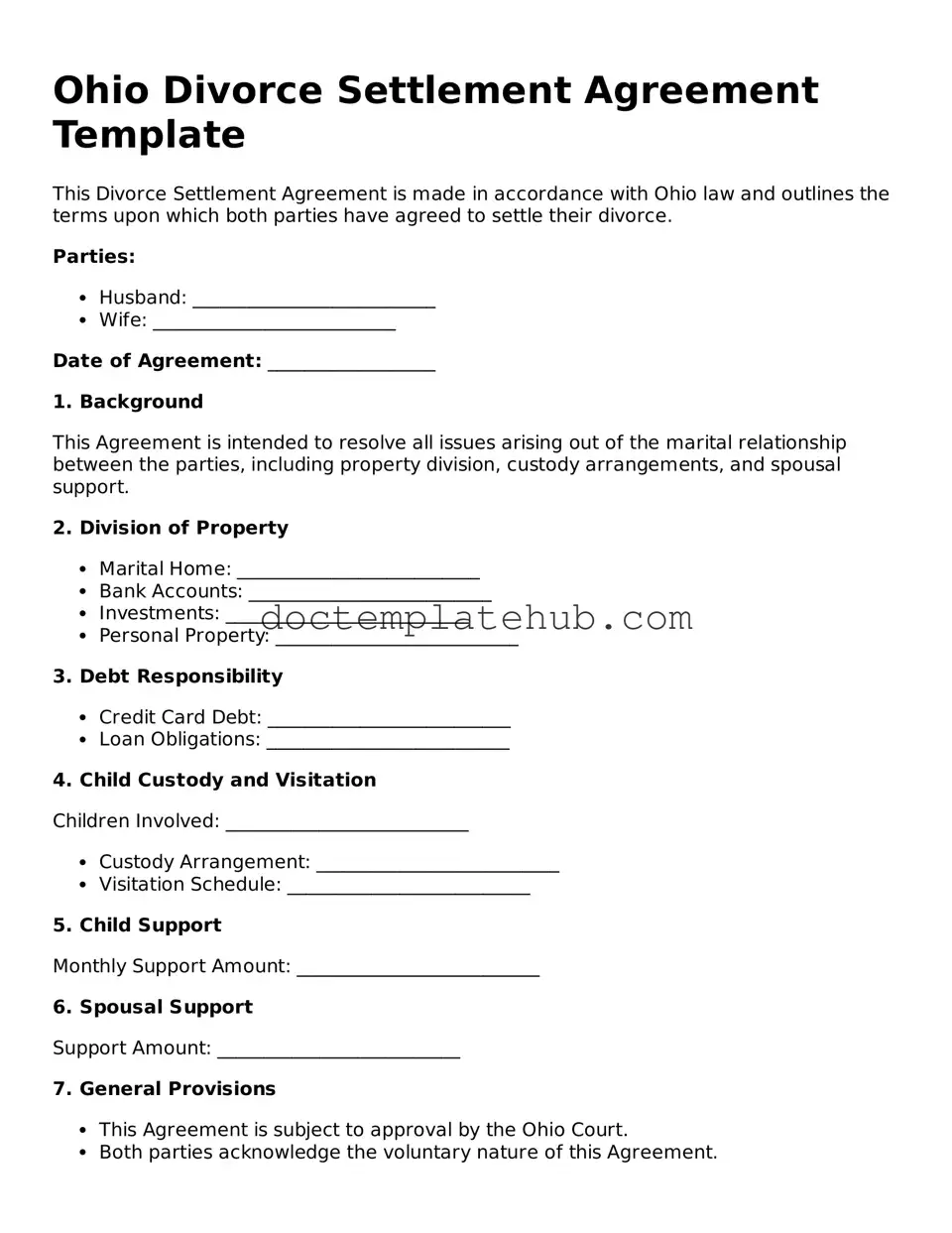What is a Divorce Settlement Agreement in Ohio?
A Divorce Settlement Agreement is a legal document that outlines the terms agreed upon by both spouses during a divorce. It typically includes provisions related to property division, spousal support, child custody, and child support. This agreement helps to ensure that both parties have a clear understanding of their rights and responsibilities following the divorce.
How do I create a Divorce Settlement Agreement?
Creating a Divorce Settlement Agreement involves negotiation between both spouses. It is often beneficial to consult with an attorney who can provide guidance and ensure that the agreement complies with Ohio law. Both parties should discuss their needs and preferences, and then draft the agreement, addressing all relevant issues. Once both parties agree on the terms, they can sign the document, making it legally binding.
Is a Divorce Settlement Agreement required in Ohio?
While a Divorce Settlement Agreement is not legally required, it is highly recommended. Having a formal agreement helps prevent future disputes and provides a clear framework for how issues will be handled post-divorce. If you do not have an agreement, the court will make decisions for you, which may not align with your preferences.
Can I modify a Divorce Settlement Agreement after it is signed?
Yes, a Divorce Settlement Agreement can be modified after it is signed, but both parties must agree to the changes. If circumstances change significantly—such as a job loss or a change in the needs of a child—either party can request a modification through the court. It is important to document any changes formally to avoid misunderstandings in the future.
What happens if one party does not comply with the Divorce Settlement Agreement?
If one party fails to comply with the terms of the Divorce Settlement Agreement, the other party can seek enforcement through the court. The court may require the non-compliant party to fulfill their obligations or face penalties. It is crucial to keep records of any violations to support your case in court.
Do I need a lawyer to draft a Divorce Settlement Agreement?
While it is not mandatory to hire a lawyer, it is advisable. An attorney can help ensure that your rights are protected and that the agreement meets legal standards. They can also assist in negotiating terms that are fair and reasonable for both parties, which can save time and reduce stress during the divorce process.
How long does it take to finalize a Divorce Settlement Agreement?
The time it takes to finalize a Divorce Settlement Agreement varies based on the complexity of the issues involved and the willingness of both parties to negotiate. If both spouses are cooperative and agree on terms, the process can be completed relatively quickly. However, if there are disputes, it may take longer to reach an agreement.
What should I do if my spouse and I cannot agree on the terms of the Divorce Settlement Agreement?
If you and your spouse cannot agree on the terms, consider mediation. A neutral third party can help facilitate discussions and guide you toward a resolution. If mediation fails, you may need to proceed to court, where a judge will make decisions regarding the contested issues based on Ohio law.
Where can I find the Divorce Settlement Agreement form in Ohio?
Divorce Settlement Agreement forms can typically be found on the Ohio Supreme Court website or through local county court websites. Additionally, many family law attorneys can provide templates and guidance on how to complete the form correctly. It is important to ensure that any form used is up to date and complies with current Ohio law.
